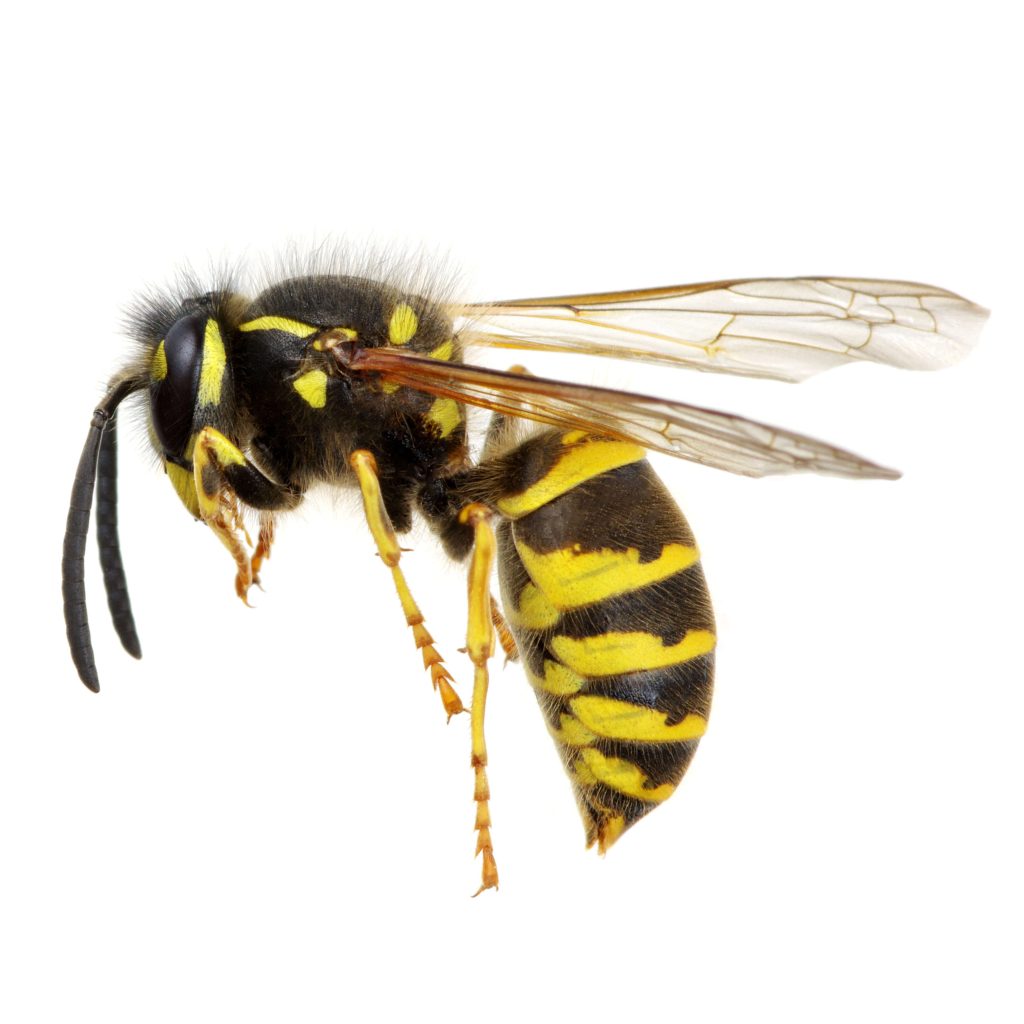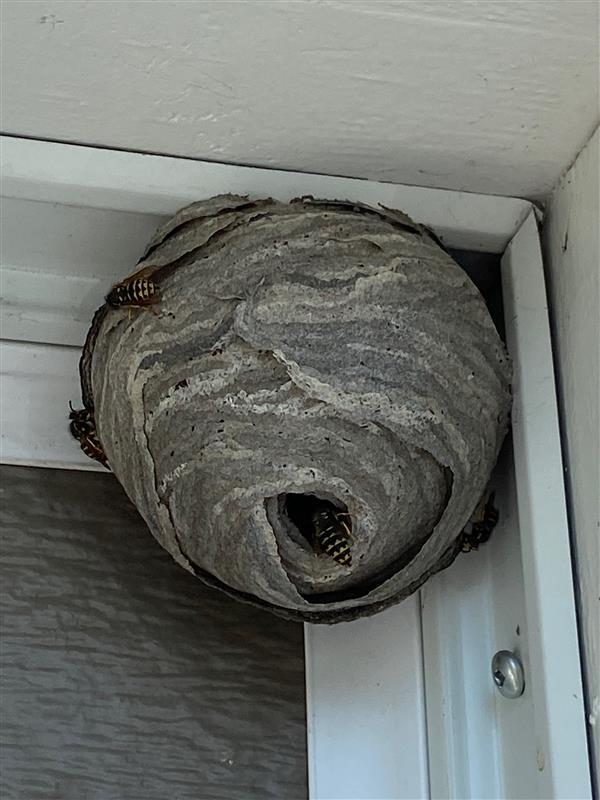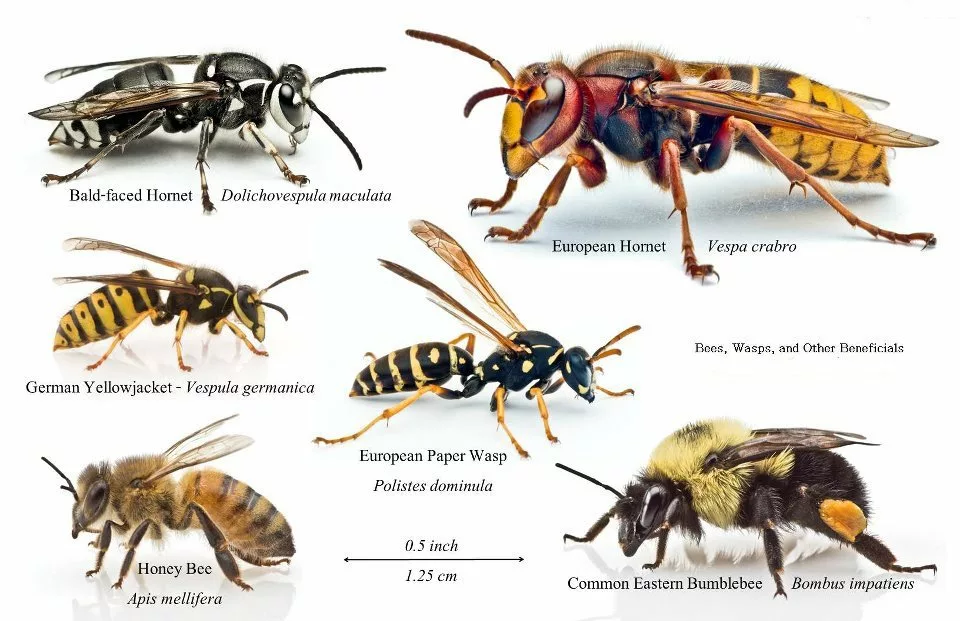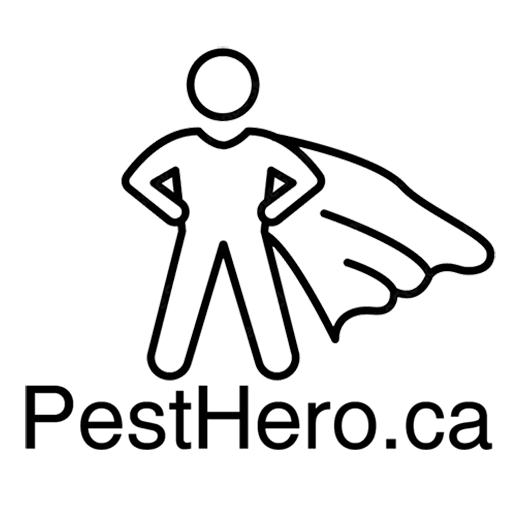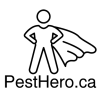WASPS
Wasps are different from bees because they have smooth bodies without hair. They have three main parts: the head, thorax, and abdomen. The thorax connects to the abdomen with a narrow section, making it look like they have a slim waist. Wasps have three pairs of legs and two pairs of wings that help them fly. Their heads have mouthparts, sensory organs, compound eyes, and segmented antennae. Female wasps have a special part at the end of their abdomen for laying eggs. The size and color of wasps can vary by species. For example, yellow jackets and hornets are stout and brightly colored with bold yellow, white, and black patterns. Paper wasps are longer and thinner, usually measuring between 16 to 25 mm, and have yellow-reddish and black markings. Mud daubers are unique with long bodies (13 to 25 mm) and are mostly black with some pale-yellow markings.
Signs of Wasp Infestation
Wasp nests can be found in many places around homes. Paper wasps often build their nests hanging from trees, under eaves, or near playgrounds. Yellow jackets usually make their nests underground, often in old rodent burrows or hidden spots under shrubs and rocks. Knowing which type of wasp is present is crucial for safe nest removal.
Problems with Wasp Nests
Wasps can be aggressive and will sting to protect their nests. If someone is allergic to wasp stings, it can lead to serious health issues. To avoid attracting wasps, follow these simple tips:
– Always cover picnic food.
– Make sure garbage lids are tightly closed.
– Check your yard early in the season for any nests forming.
Wasp Nest Removal & Control
You might find wasp nests unexpectedly while doing yard work, like mowing the lawn or cleaning gutters. While it might be tempting to try to remove the nests yourself, it’s safer to call in professionals. DIY methods can be dangerous, but pest control experts have the right tools and training to handle wasp nests safely and effectively.
Cicada Killer Wasps
Cicada killer wasps are large and known for their loud buzzing. They dig nests in sandy, well-drained soil and bring cicadas back to feed their young. Although they can sting, they usually ignore people. You can spot their nests by looking for U-shaped mounds of dirt.
Prevention Tips
To keep wasps away, seal any potential entry points in your home, such as:
– Fix cracks around windows and doors.
– Repair screens.
– Fill holes in ventilation lines.
– Check soffits and lighting fixtures.
Also, reduce food sources by:
– Keeping food sealed outdoors.
– Cleaning up spills quickly.
– Covering trash with tight lids.
Wasp-Proofing Your Home
Queens hibernate in protected areas during winter and start new colonies in the spring. To prevent this, inspect your home for cracks and gaps that could let them in. Any opening larger than a quarter of an inch can be a potential entry point.
Habitat Modification
To discourage wasps, eliminate food sources that attract them. This includes reducing flies, ants, and spiders, which are food for wasps. Trim back bushes and remove old nests to prevent them from returning.
Human Behavior Modification
When having outdoor gatherings, keep food sealed, clean up spills right away, and store garbage bins at least 50 feet away from where people are eating. During summer, empty outdoor trash bins daily.
Call the Professionals
If you find a wasp nest or are dealing with an infestation, it’s best to contact a pest control expert. They can provide safe and effective solutions to keep your home wasp-free.
Common Questions About Wasps
– Why do I have wasps? There are over 500 species of wasps in Canada, and they often build nests near food sources. They are attracted to human food waste and can be found in various locations around homes.
– How worried should I be about wasps? While wasps can be beneficial by controlling pest populations, they can also be aggressive. If you see a nest, it’s best to leave it to the professionals.
– What attracts wasps? Wasps are drawn to sweet foods and garbage. They prefer nesting in areas with easy access to food and shelter, such as trees, shrubs, and even abandoned buildings.
By understanding wasps and taking preventive measures, you can enjoy your outdoor spaces without the worry of these pests. If you suspect a wasp problem, don’t hesitate to reach out for professional help!
